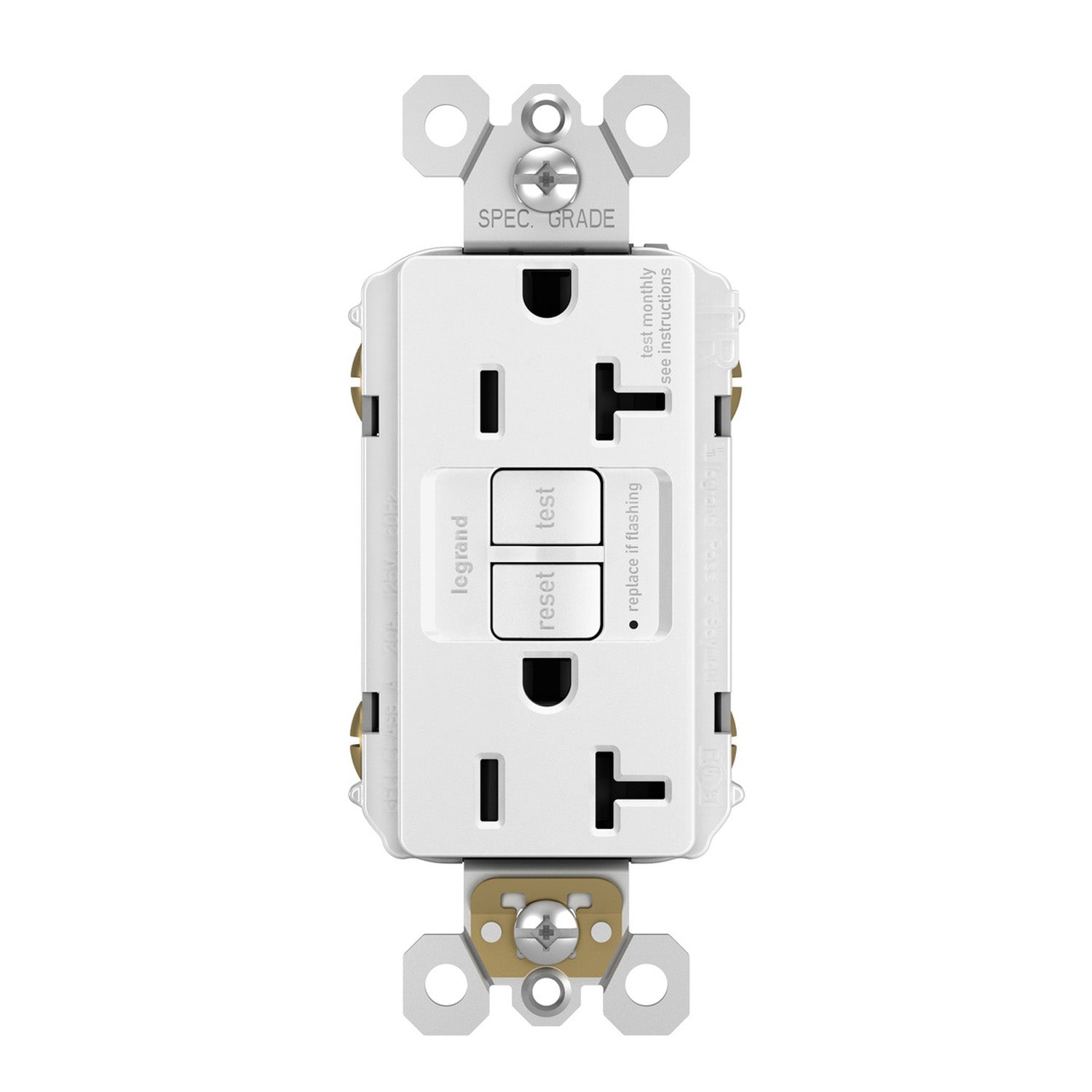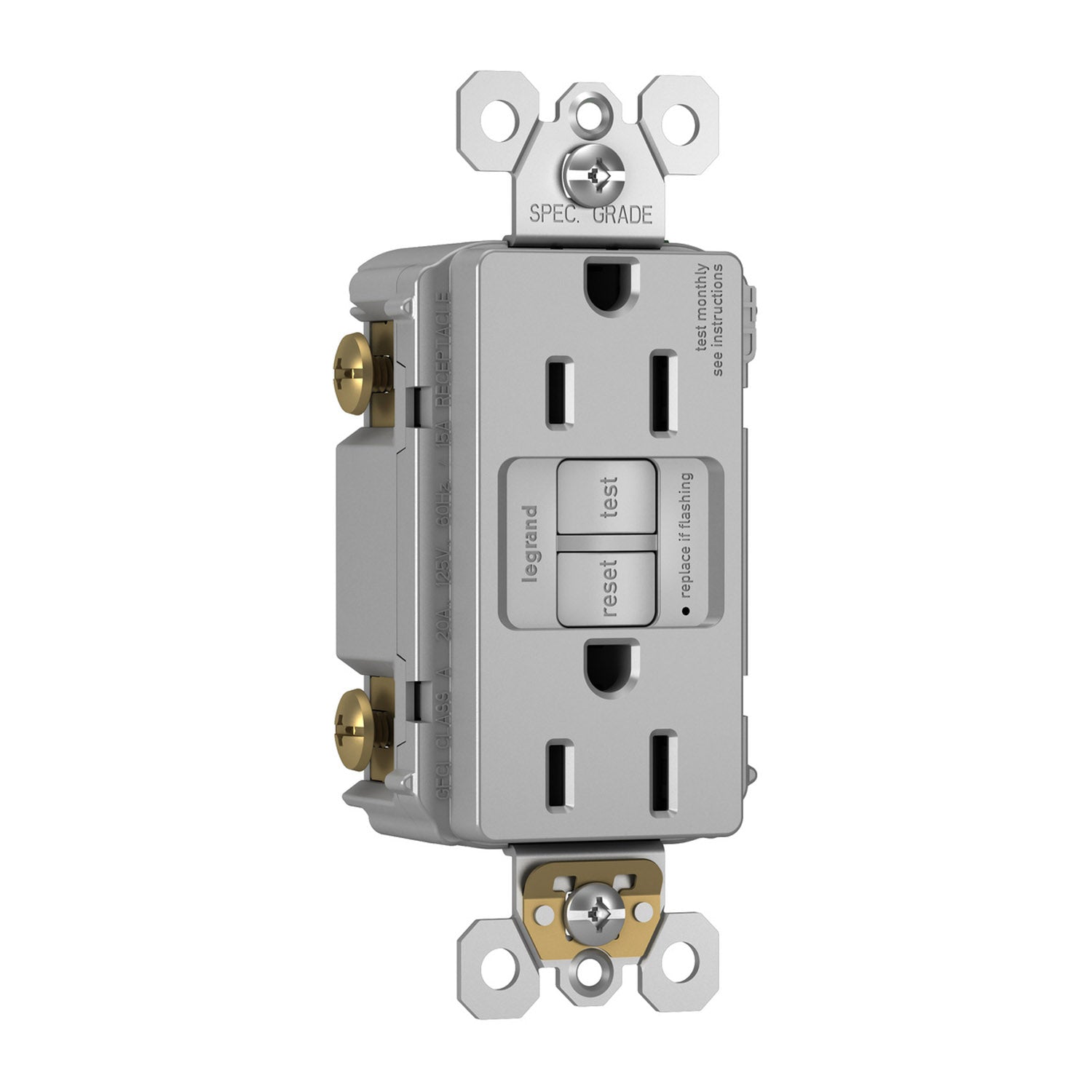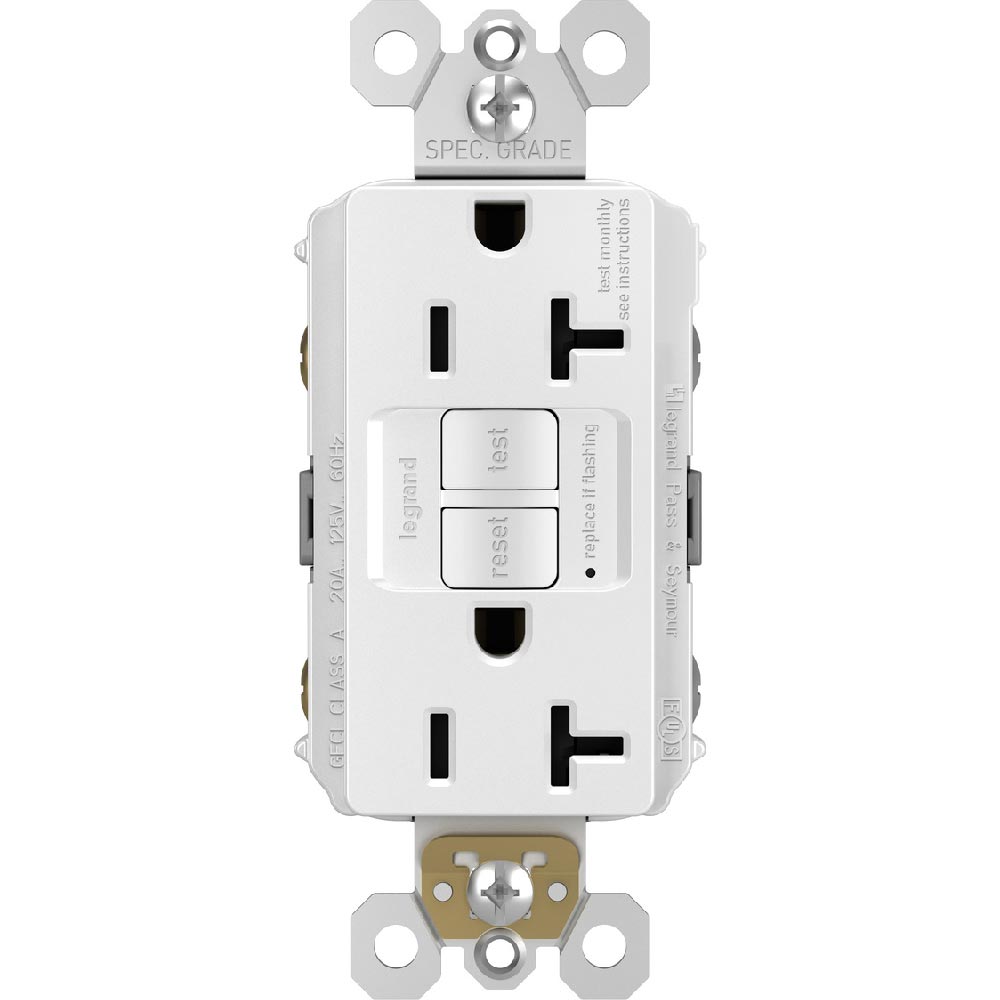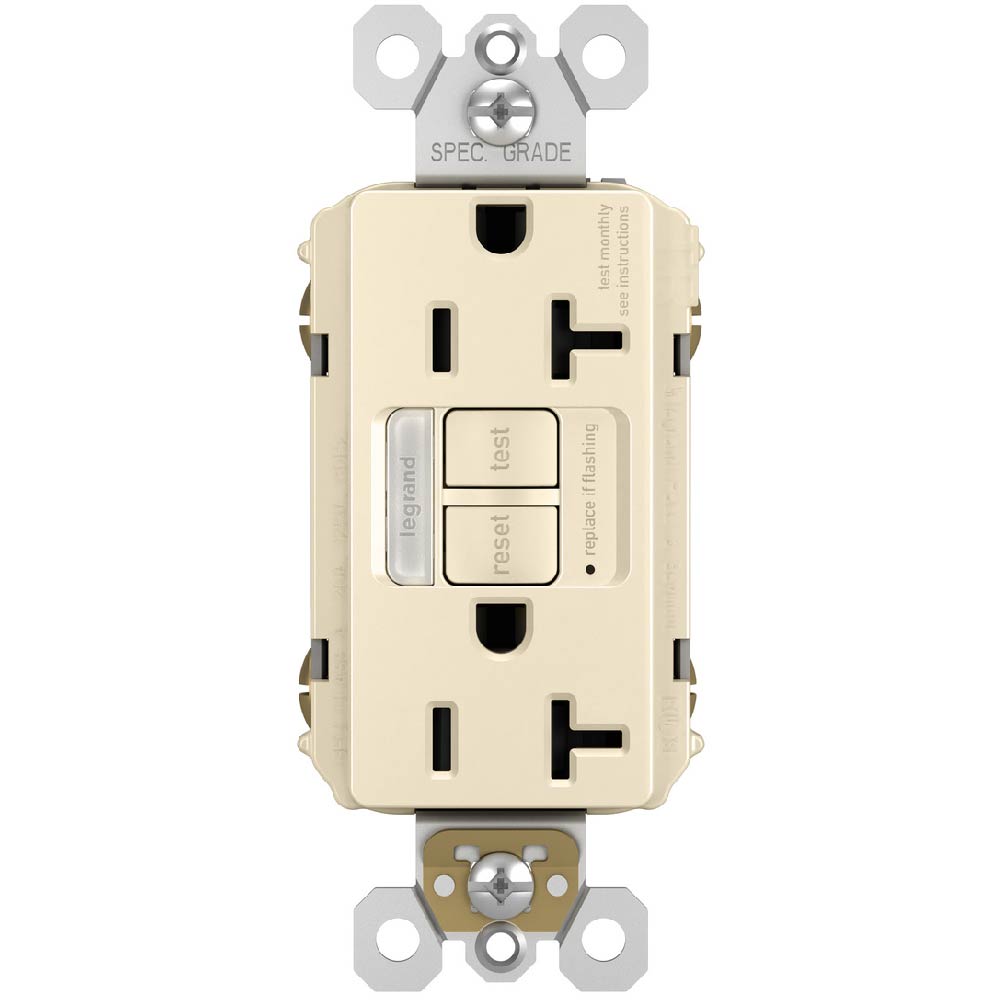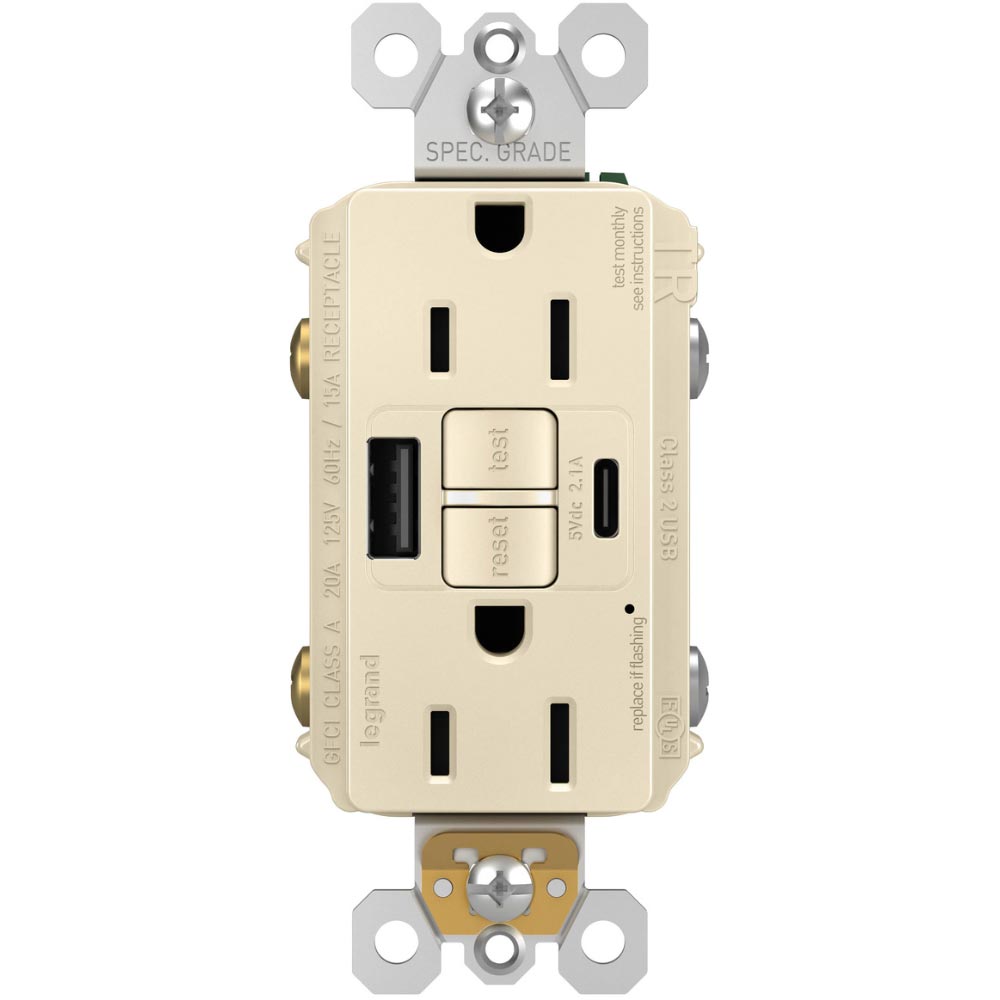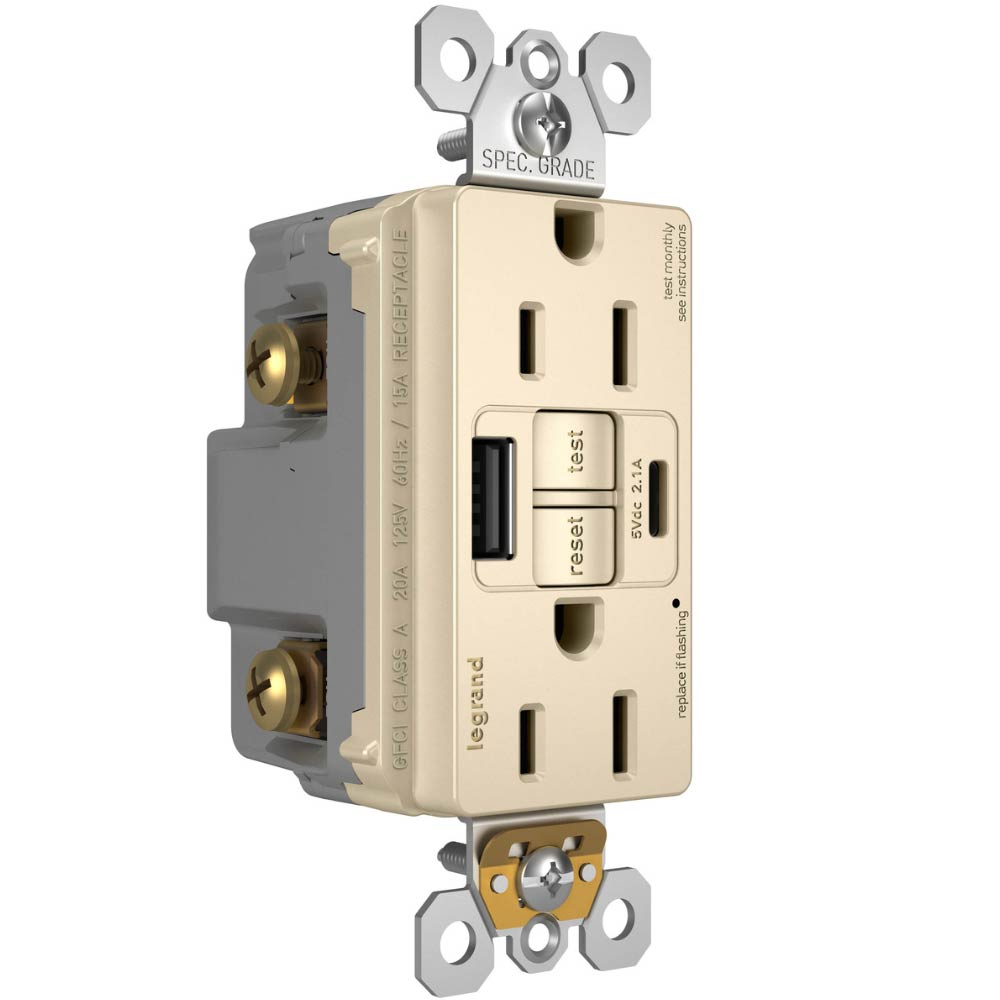GFCI Outlets
BEST SELLERS
A Ground Fault Circuit Interrupter (GFCI) outlet is an electrical device designed to protect you from the dangers of electrical shock. It is specifically designed to detect ground faults, which occur when the electrical current deviates from its intended path and flows through an unintended conductor, such as water or a person. The GFCI outlet is equipped with special sensors that detect this deviation and instantly shut off the power to prevent serious injury or even death.
GFCI receptacles are easily recognizable by their distinctive "Test" and "Reset" buttons. These buttons allow you to test the functionality of the outlet and reset it after a ground fault has been detected and resolved. It is important to note that GFCI electrical outlets provide protection not only to the outlet itself but also to all downstream outlets connected to it.
How Does a GFCI Outlet Work?
To understand how a GFCI outlet works, it's important to know a little bit about electrical circuits. In a typical electrical circuit, the current flows in a loop from the power source, through the wiring, and back to the power source. A GFCI outlet constantly monitors the flow of electrical current in this circuit. It compares the current flowing into the outlet with the current flowing out of the outlet. If there is even a slight difference between the two, it means that the current is flowing through an unintended path, indicating a ground fault.
When a ground fault is detected, the GFCI receptacle reacts quickly to protect you from harm. It trips a built-in circuit breaker, cutting off the flow of electricity to the outlet within a fraction of a second. This fast response time is crucial in preventing electrical shock. Once the ground fault is resolved, you can simply press the "Reset" button to restore power to the outlet.
The Importance of GFCI Receptacles in Electrical Safety
GFCI outlets play a vital role in electrical safety, especially in areas where water is present, such as bathrooms, kitchens, and outdoor spaces. Water is a good conductor of electricity, and even a small amount of moisture can increase the risk of electrical shock. GFCI outlets provide an extra layer of protection by quickly detecting ground faults and cutting off the power supply, minimizing the risk of electrocution.
In addition to protecting individuals from electrical hazards, GFCI outlets also help prevent electrical fires. Ground faults can cause excessive heat buildup, leading to electrical arcing and sparking. By interrupting the circuit when a ground fault is detected, GFCI outlets help prevent these dangerous conditions and reduce the risk of fire.
It is important to note that GFCI receptacles are not just a recommended safety feature; they are required by electrical codes and regulations in many jurisdictions. Compliance with these regulations is essential to ensure the safety of occupants in both residential and commercial buildings.
GFCI Outlet Requirements and Regulations
To ensure proper installation and functionality, there are specific requirements and regulations for GFCI outlets. These requirements may vary depending on the location and type of building. Here are some common requirements to consider:
- Location: GFCI receptacles are typically required in areas where water is present, such as bathrooms, kitchens, laundry rooms, garages, and outdoor outlets. They should be installed within six feet of sinks, bathtubs, showers, and other water sources.
- Number of Outlets: In certain areas, such as kitchens and bathrooms, all outlets must be GFCI protected. This means that if one outlet in the area is a GFCI outlet, it provides protection to all outlets downstream.
- Outdoor Protection: Outdoor outlets should be GFCI protected to prevent electrical hazards caused by rain, snow, or other weather conditions.
- Tamper Resistance: In recent years, tamper-resistant GFCI outlets have become more prevalent. These outlets have built-in shutters that block access to the electrical contacts, preventing accidental insertion of foreign objects and reducing the risk of electrical shock.
It is important to consult with a licensed electrician to ensure compliance with local regulations and to properly install GFCI outlets in your specific situation.
GFCI Outlets vs. Standard Receptacles: What's the Difference?
GFCI outlets differ from standard outlets in several key ways:
- Safety Features: GFCI outlets are equipped with special sensors and circuitry to detect ground faults and quickly interrupt the circuit. Standard outlets do not have this capability.
- Protection Level: GFCI outlets provide a higher level of protection against electrical shock compared to standard outlets. They can detect even small imbalances in current flow and react quickly to prevent accidents.
- Code Requirements: GFCI outlets are required in specific areas where water is present, as mandated by electrical codes and regulations. Standard outlets do not have the same requirements.
- Functionality: GFCI receptacles have the added functionality of a "Test" and "Reset" button, allowing you to easily test and restore power after a ground fault. Standard outlets do not have these features.
It is important to consider these differences when determining the appropriate type of outlet to use in different areas of your home or business.
GFCI outlets are an essential component of electrical safety, providing protection against ground faults and reducing the risk of electrical shock and fires. Understanding how GFCI outlets work, complying with installation requirements, and regularly testing and maintaining them are crucial steps in ensuring their effectiveness. By utilizing GFCI outlets in the appropriate areas and following proper safety procedures, you can enhance the safety of your home or business and protect yourself and others from electrical hazards.
Have a question? We are here to help.
Check out the most common questions our customers asked. Still have questions? Contact our customer support.

How do I report damaged or defective items?
If your item is damaged or defective, we will resolve the issue if reported within 15 days of delivery. We may ask for photos of the damage or for the item to be returned. Login to your account and request a return. My Account
How to return this product?
Returns are easy and seamless. The process to return items may vary depending on how they arrived. Most items can be returned within 60 days of delivery. To start a return, visit the Orders section of My Account.
How to I track my order?
Login to your account and visit my Orders section.
Your order is important to us, feel free to call us to chat with us for any order inquiry.
Do you offer return or exchange?
If you are unsatisfied with a purchase, you can return it within 60 days. Restocking fees do not apply to regular stock items under $5000, but special order items may have up to a 30% restocking fee.
What is your return policy?
We have a 60-day return policy with no restocking fee for regular stock items under $5000. Special order items can be returned or canceled, but may incur a restocking fee of up to 30%.see details
How much time it will take for delivery?
For quick ship product, we ship same day before the 1pm cut off time. Shipping dates for products fulfilled from suppliers or special orders will be listed on each item. See each product for details.
How can I contact customer support?
Our customer care team is available Monday through Friday from 8am to 5pm PST. You can also reach us after hours using the chat to open tickets, and we will respond promptly.
Your business is important to us!




































































































